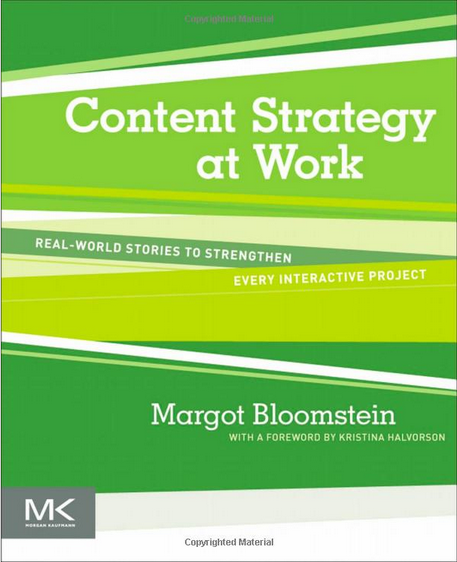Reader challenge: How do you save your marketing project from last-minute derailment?
If you’ve ever had a project go bad at the last minute, you’ll care about the answer to this reader challenge. You may even have solutions. So please join the conversation.
I’ve participated in at least one marketing project that was cancelled due to a change of direction at the top. Some projects’ derailments are out of your control, for example if your firm is sold or a new boss arrives.
Stakeholder buy-in is key
 Other projects die from preventable problems. This is why I said “Aha!” when reading Margot Bloomstein’s Content Strategy at Work.
Other projects die from preventable problems. This is why I said “Aha!” when reading Margot Bloomstein’s Content Strategy at Work.
Bloomstein says, “It’s important that you involve all the stakeholders in the room–don’t let anyone hang back like a shadowy presence, ready to swoop in and derail activities.” In her book chapter on “Designing cohesive experiences: Introducing content strategy to design,” she walks the reader through a process using a facilitator to get stakeholders to agree on a company’s messaging priorities. While the specifics of Bloomstein’s plan are most appropriate for a firm tackling its marketing “big picture,” you could adapt elements for smaller projects.
My approach to getting buy-in
Learning from experience, I’ve tweaked my writing process to help my clients get buy-in from their colleagues and superiors.
You can adapt the following process to your situation, if appropriate.
Step 1: Interview the client to understand what they’d like to accomplish and why. Define the project’s scope as narrowly as possible.
Step 2: Prepare a proposal that incorporates information from Step 1. This lets us see if we share a common understanding of the project. If not, we discover our disagreements early. This saves time.
Step 3: Collect information for the writing project and prepare a robust outline. Rather than go directly to a first draft, I prepare a robust outline for the client’s review. The outline’s purpose is to let clients focus on ensuring that all of the necessary content is included, without getting distracted by stylistic issues. I’d like to think that it’s easy for them to circulate the outline for internal approval. Once a client finishes commenting on this outline, there shouldn’t be any surprises in the form of new content introduced later.
Step 4: Circulate a complete draft for comments. My clients typically have only minor edits in response to this draft.
How do you keep your marketing projects from getting derailed?
The techniques described above help in some, but not all, situations. I’ve discussed solutions specific to working with portfolio managers in “Reader question: How can communicators manage difficult portfolio managers?”
I’m sure you have techniques that I haven’t discussed. Please share your ideas.




Susan,
I have found that the same approach works. I use a marketing strategy first and get all the details of the project written down. Buy in here first is key to moving forward with the smaller projects that will follow. Then with each project I use a creative brief to detail the what, who, why, and graphic needs. With that I send the first draft of copy.This also must have buy in. By the time we get to the actual work everyone agrees with the project and has had input.
Susan,
I think your approach is the right track.
When doing positioning work with firms, like agreeing on a value proposition and elevator speech, I usually have at least one on-site facilitated meeting so everyone can agree. We also then get one specific way everyone agrees to use to describe the firm. That helps create a reputation that can build momentum.
The only time I have ever had a project derail, as Margot describes, is when I have not had the senior or managing partner actively in the conversation. I suggested it and my contact said “He can’t make the time – he has given me authority to move forward and has agreed to go with what we develop.” I should have known better. Ultimately the managing partner came in right at the end and made changes that compromised the effectiveness of the project.
Thank you, Lucinda and Stephen! It seems as if that initial buy-in is key, and then it helps to check in along the way.